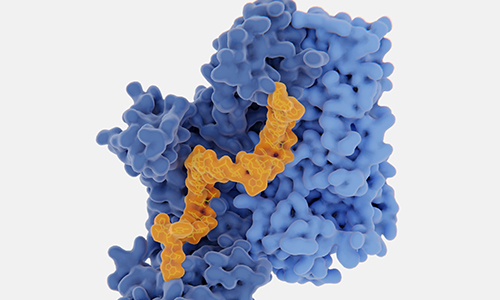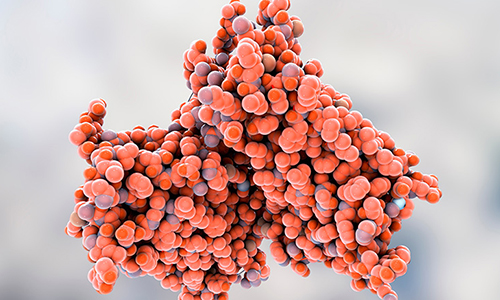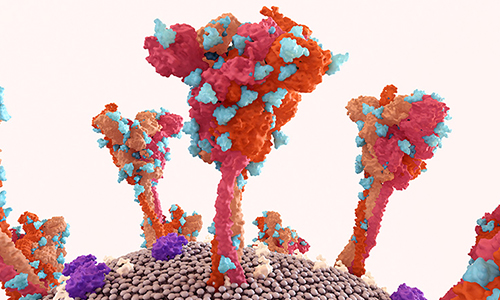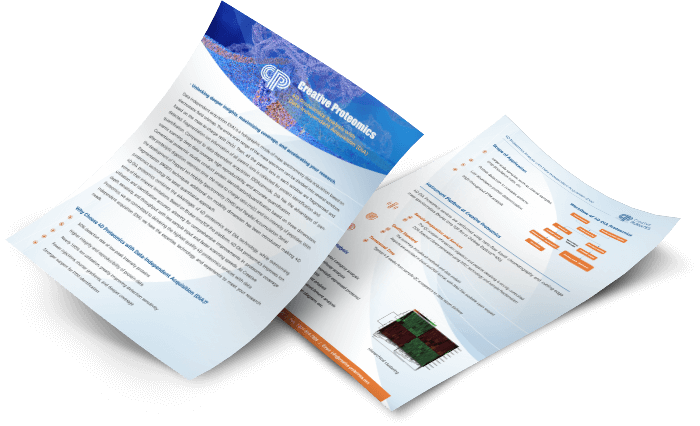DIA vs DDA Mass Spectrometry: A Comprehensive Comparison
Mass spectrometry is an analytical methodology of exceptional power that holds immense potential for identification and quantification of proteins in diverse biological samples. Amongst the plethora of data acquisition techniques employed in mass spectrometry, the two most popular ones are data-independent acquisition (DIA) and data-dependent acquisition (DDA). In this article, we will delve deep into the principles, advantages, and limitations of these techniques and explore why DIA outshines DDA in the field of mass spectrometry.
What is DIA in Mass Spectrometry?
In the sphere of mass spectrometry, the technique of data-independent acquisition (DIA) is employed for procuring and scrutinizing extensive datasets with meticulousness and replicability that are akin to a well-oiled machine.
The DIA technique entails the fragmentation of each and every single analyte ion present in a sample, after which the corresponding mass-to-charge (m/z) ratios are gauged. This gives rise to a spectrum of fragment ions, or a "mass spectrum," that can be exploited to recognize the various components within the sample.
In contradistinction to data-dependent acquisition (DDA), where the instrument selects specific ions to fragment based on their intensity or abundance, DIA captures all of the fragment ions within a predetermined m/z range in a methodical and impartial fashion. This enables the detection and quantification of every detectable analyte in the sample, irrespective of their level of abundance or m/z value.
DIA has extensive applications across several domains, such as proteomics, metabolomics, and lipidomics. It engenders exhaustive datasets that can be analyzed using diverse computational tools to extract salient biological information that holds great significance.
What is DDA in Chromatography?
The intricate and multifaceted world of mass spectrometry encompasses a technique known as DDA. In this realm, ions are cherry-picked for fragmentation, all on the basis of their intensity or abundance.
Within the framework of DDA, the mass spectrometer makes a conscious effort to isolate a handful of ions from the sample and then subsequently shatters them into smaller peptide fragments, which in turn produces a spectrum of their constituent peptides. The criteria for selecting the particular ions for fragmentation is primarily founded upon their intensity, with the ones that are the most abundant being awarded precedence. Once the chosen ions have been effectively fragmented, the mass spectrometer moves on to the next set of ions, whereupon the process is iteratively repeated until a sufficient number of peptides have been unequivocally identified and quantified.
Why is DIA Better than DDA?
DIA is the superior method for analyzing complex proteomic samples due to its numerous advantages over DDA, including its ability to detect low-abundance peptides, its increased specificity, and its greater reproducibility. With its comprehensive and accurate analysis, DIA has become an indispensable tool for researchers in the fields of drug discovery and clinical research, helping to advance our understanding of complex biological systems and diseases.
One of the major limitations of DDA is its propensity to generate incomplete or biased data, primarily due to its potential to miss low-abundance peptides and its bias towards highly abundant peptides. Moreover, DDA is often plagued by interferences arising from co-eluting peptides, which can result in false positives or negatives. On the other hand, DIA is capable of detecting low-abundance peptides that DDA may overlook since all ions within a pre-defined m/z range are fragmented and analyzed.
Another advantage of DIA over DDA is its increased specificity. DIA can differentiate between isobaric peptides that have the same m/z but different sequences, thanks to its ability to fragment multiple precursor ions simultaneously and use their fragment ions to distinguish between them. This results in a more precise and accurate analysis of complex proteomic samples.
Last but not least, DIA boasts greater reproducibility when compared to DDA. This is because all ions within a pre-defined m/z range are analyzed in every run, ensuring consistent coverage and accuracy across multiple samples. As a result, DIA offers a more reliable and consistent method for analyzing complex proteomic samples, which is crucial in fields such as drug discovery and clinical research where accurate and reproducible results are imperative.
How to Choose DIA and DDA Mass Spectrometers
In the captivating world of proteomics, the selection of an appropriate mass spectrometry technique is undoubtedly the quintessential key to unlocking the doors of accurate and reliable results. When it comes to proteomic analyses, DIA and DDA are two of the most commonly utilized techniques. However, choosing the right technique is not a decision that should be taken lightly, as it depends on several crucial factors that can affect the outcome of the study.
Research Goal
DIA is a widely recognized technique for conducting large-scale protein studies requiring high coverage and quantitative accuracy. For example, Collins et al. (2017) demonstrated the effectiveness of DIA in quantifying more than 9,000 proteins in the mouse brain, further emphasizing the technique's unparalleled ability to analyze large-scale proteomes.
On the other hand, DDA is the technique of choice when dealing with small-scale studies that require high sensitivity and accuracy, especially in detecting post-translational modifications. A study by Mehar Un Nissa et al. (2022), which used DDA to analyze the proteome and post-translational modifications of widely farmed tropical water fish, is a good example of the high sensitivity of DDA for such applications.
Mehar Un Nissa et al. (2022)
Sample Type
The choice of mass spectrometry method also depends on the type of sample being analyzed. DIA is ideal for analyzing complex samples, such as whole cells or tissues. Currently, there are several reports on DIA in brain research, in particular the quantitative analysis of cellular and synaptic proteomes to reveal the spatial and/or temporal changes of proteins that underlie neuronal plasticity and disease mechanisms(Ka Wan Li et al. (2020)). DIA's ability to provide comprehensive proteome coverage is especially useful in complex biological samples. In contrast, DDA is suitable for analyzing less complex samples, such as purified protein extracts.
Data Analysis
DIA, due to its highly complex data, demands the use of advanced bioinformatics tools for analysis. A study by I. Ortea et al. (2016) that analyzed the proteome of human bronchoalveolar lavage fluid, employed a plethora of bioinformatics tools such as spectral library building and targeted data extraction. Although DIA's data complexity necessitates bioinformatics expertise for data analysis, it enables comprehensive proteome analysis, thereby providing a more profound understanding of the biological system being studied.
On the other hand, DDA generates simpler data that can be analyzed using more straightforward approaches. This simplicity renders DDA's data amenable to the use of less sophisticated bioinformatics tools for analysis. However, DDA may not provide comprehensive proteome coverage, thereby limiting the depth of biological insights that can be gained.
References:
- Collins, B., Gillet, L., Rosenberger, G. et al. Quantifying protein interaction dynamics by SWATH mass spectrometry: application to the 14-3-3 system. Nat Methods 2013.
- Ortea, A. et al. Discovery of potential protein biomarkers of lung adenocarcinoma in bronchoalveolar lavage fluid by SWATH MS data-independent acquisition and targeted data extraction, Journal of Proteomics 2016
- Mehar Un Nissa et al. Organ-Based Proteome and Post-Translational Modification Profiling of a Widely Cultivated Tropical Water Fish, Labeo rohita Journal of Proteome Research 2022
- Ka Wan Li et al (2020). Recent Developments in Data Independent Acquisition (DIA) Mass Spectrometry: Application of Quantitative Analysis of the Brain Proteome Front. Mol. Neurosci., 23 December 2020
* For Research Use Only. Not for use in the treatment or diagnosis of disease.





 4D Proteomics with Data-Independent Acquisition (DIA)
4D Proteomics with Data-Independent Acquisition (DIA)